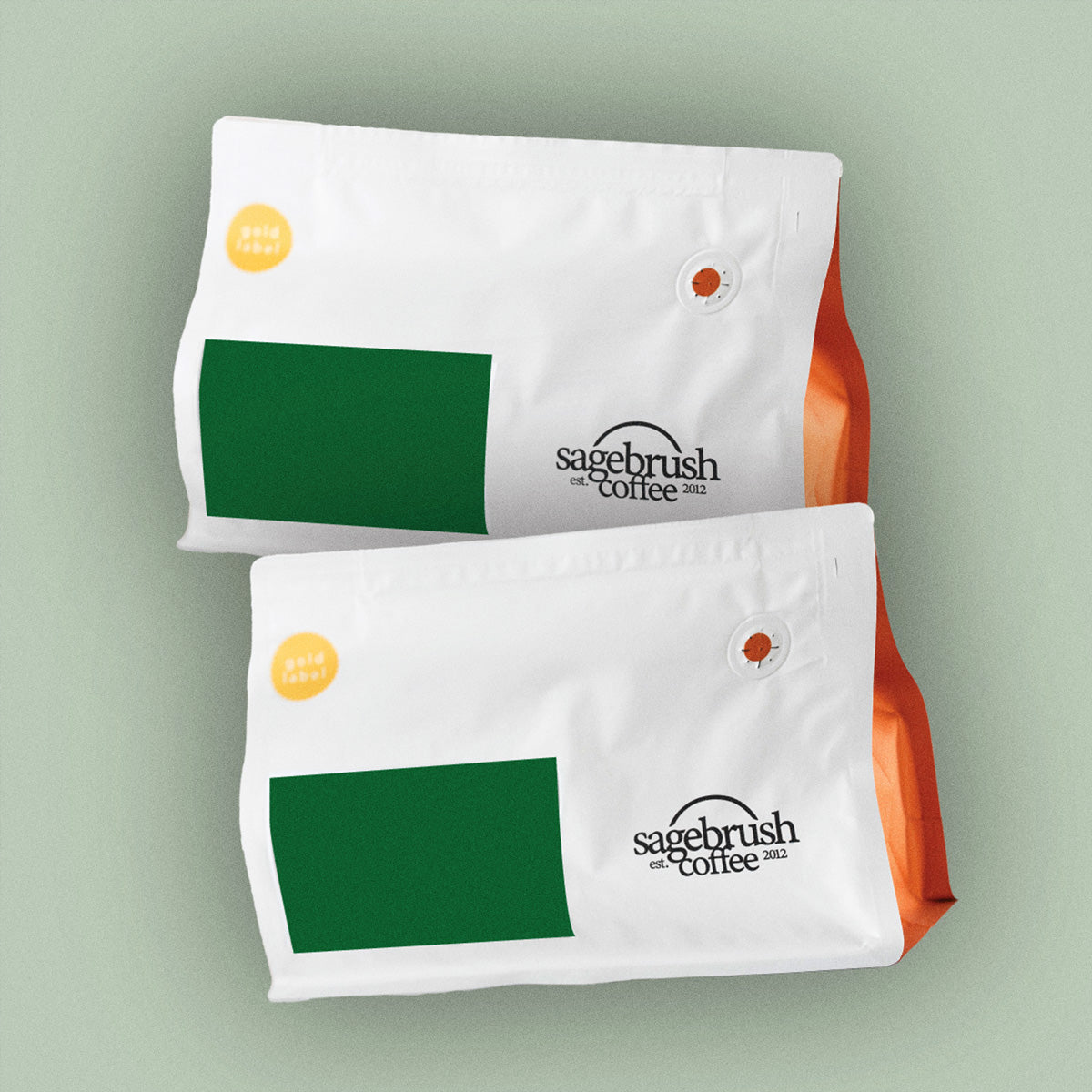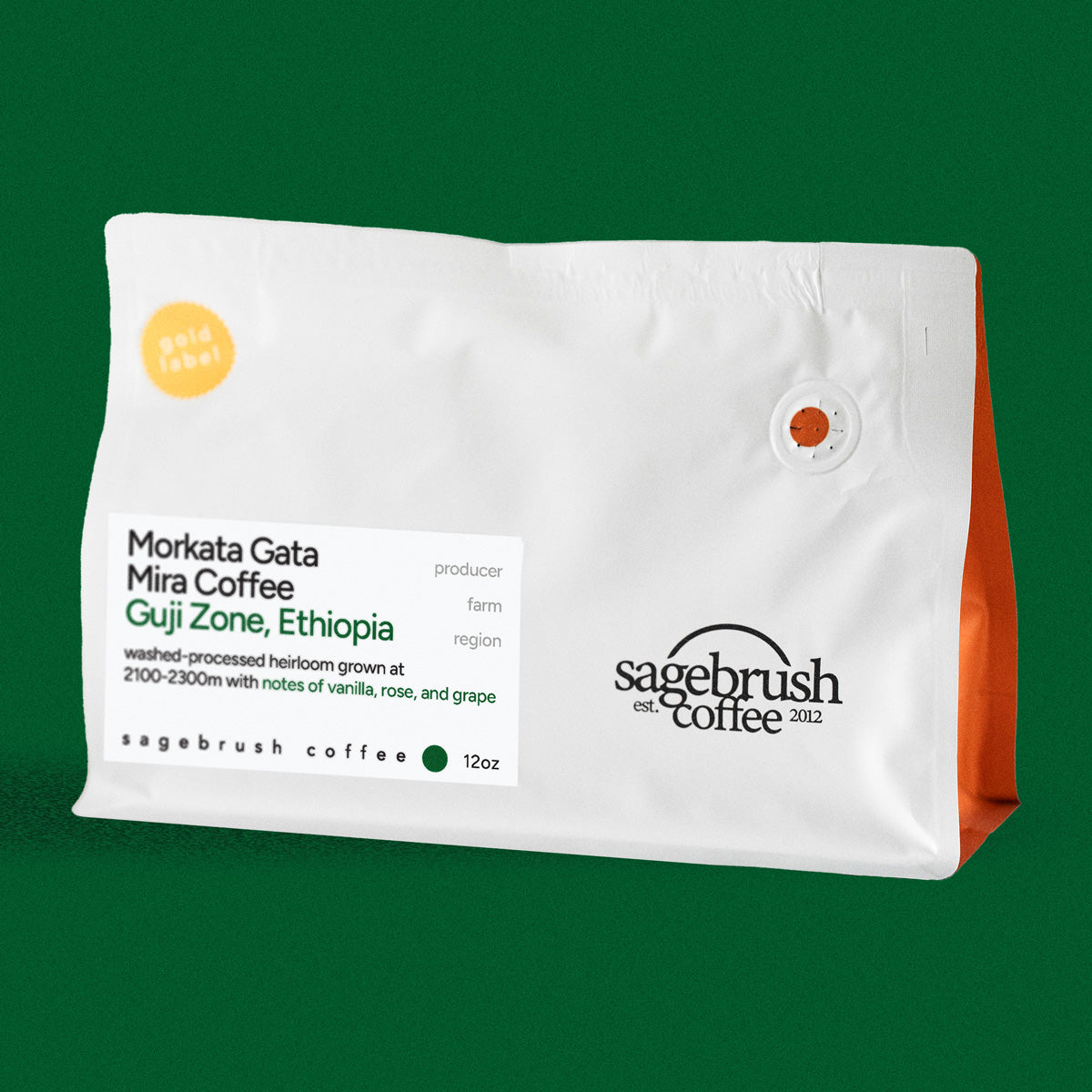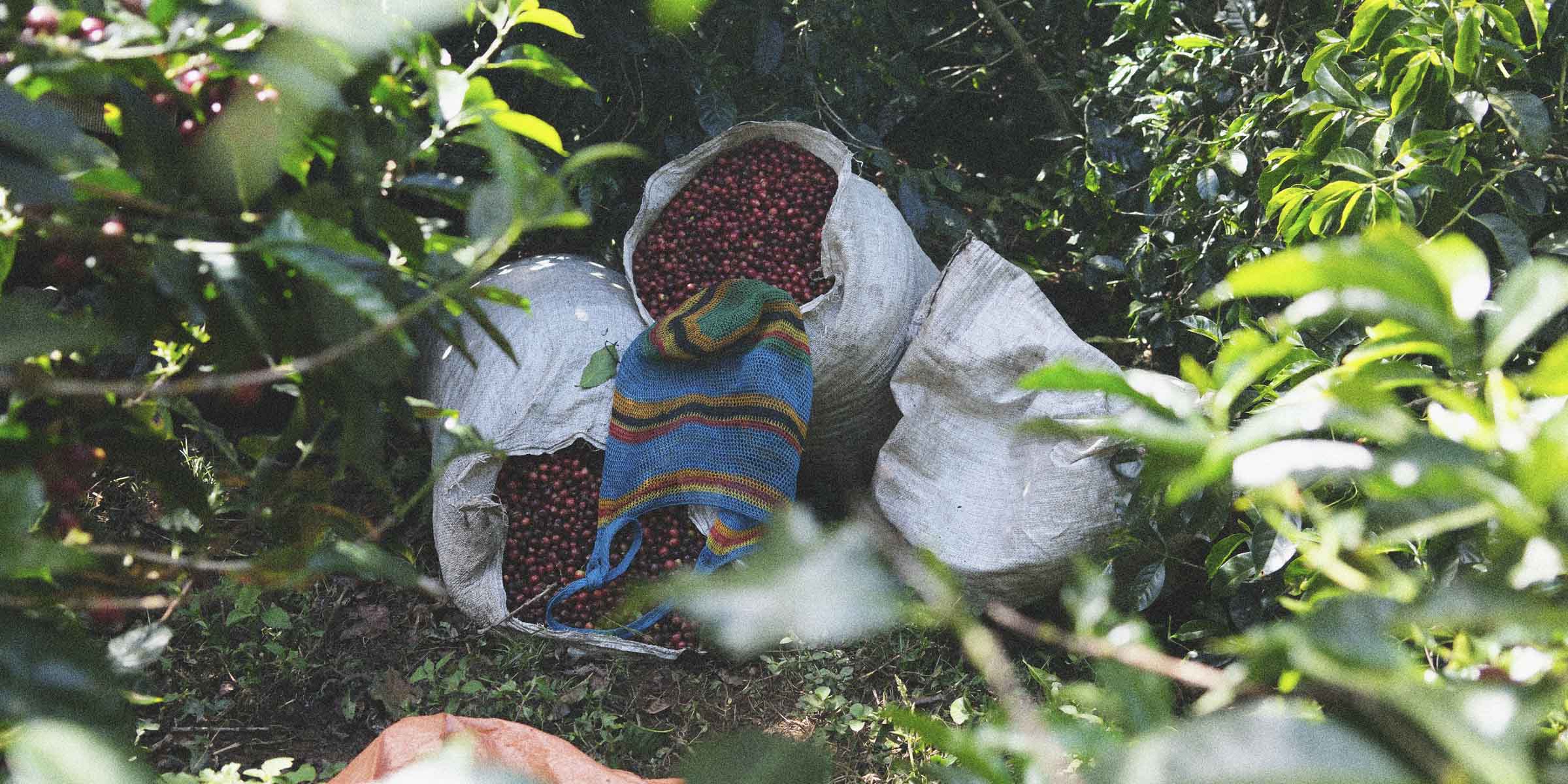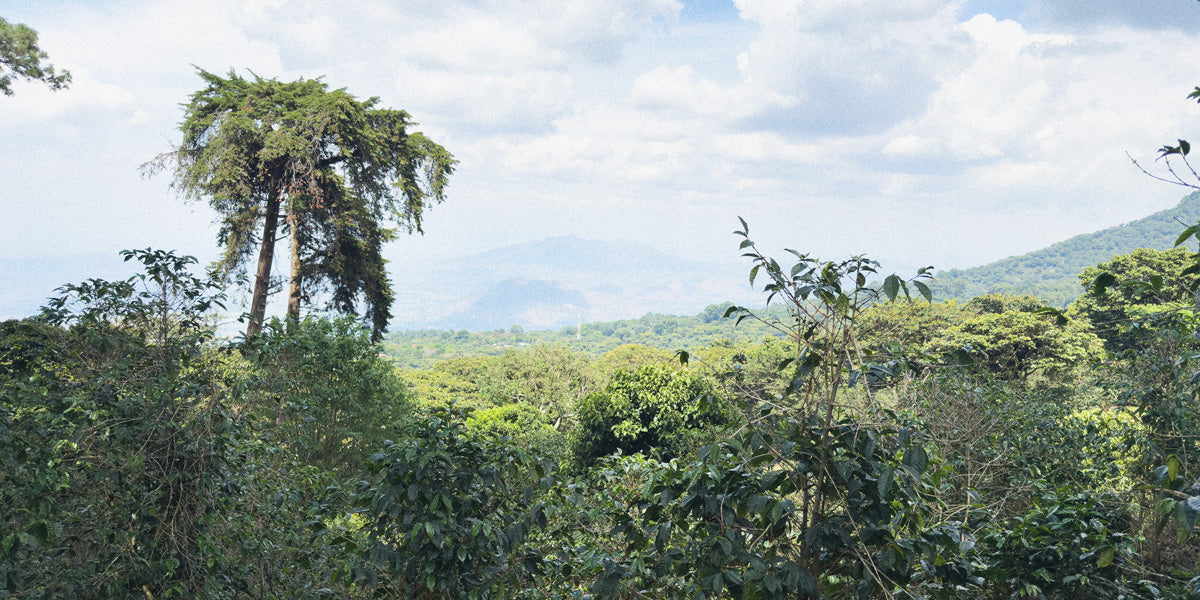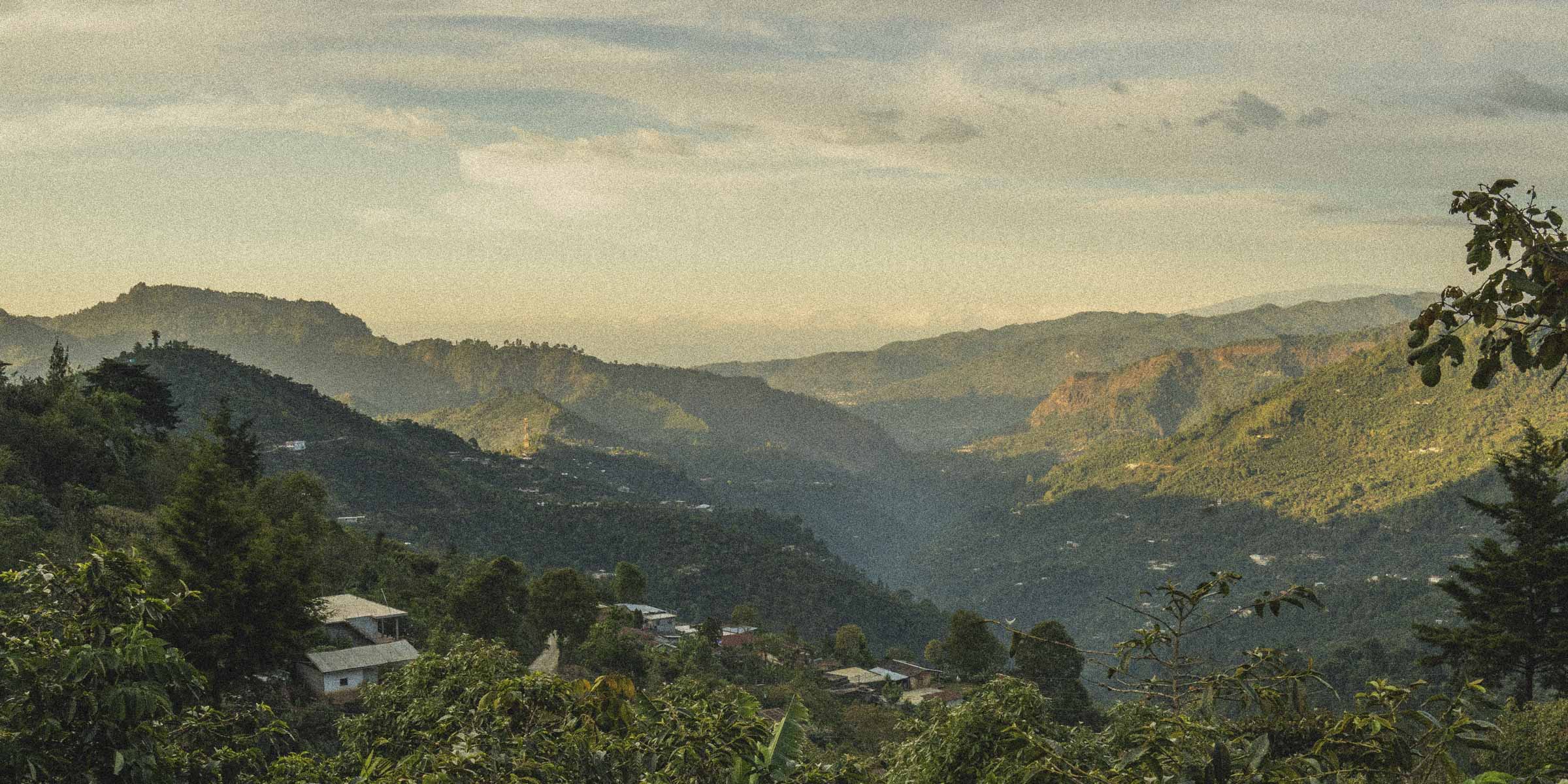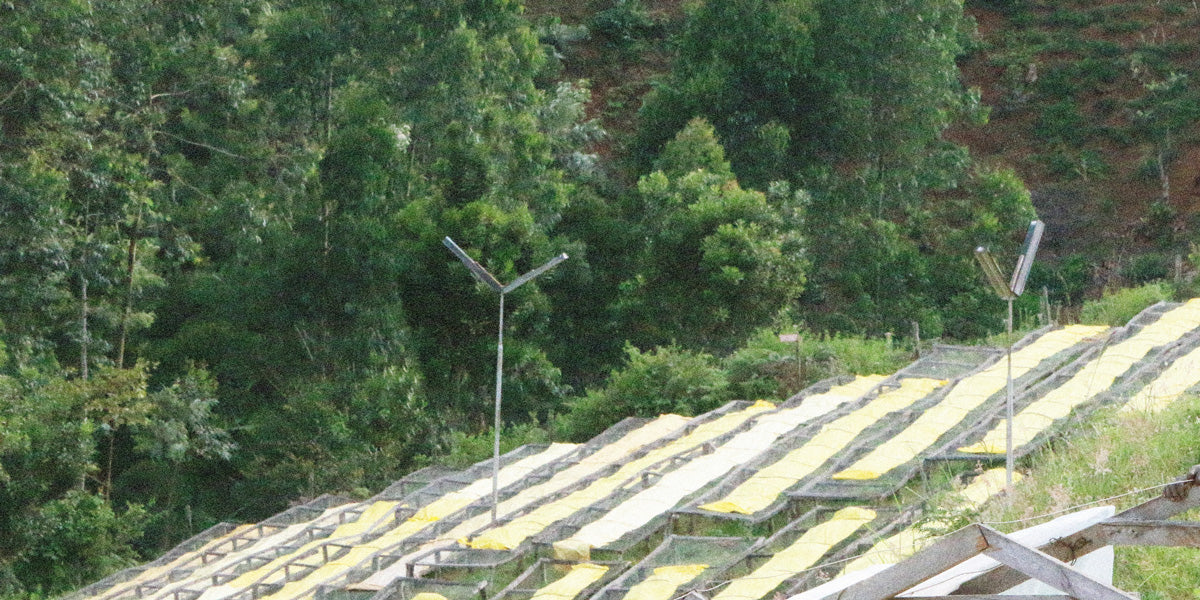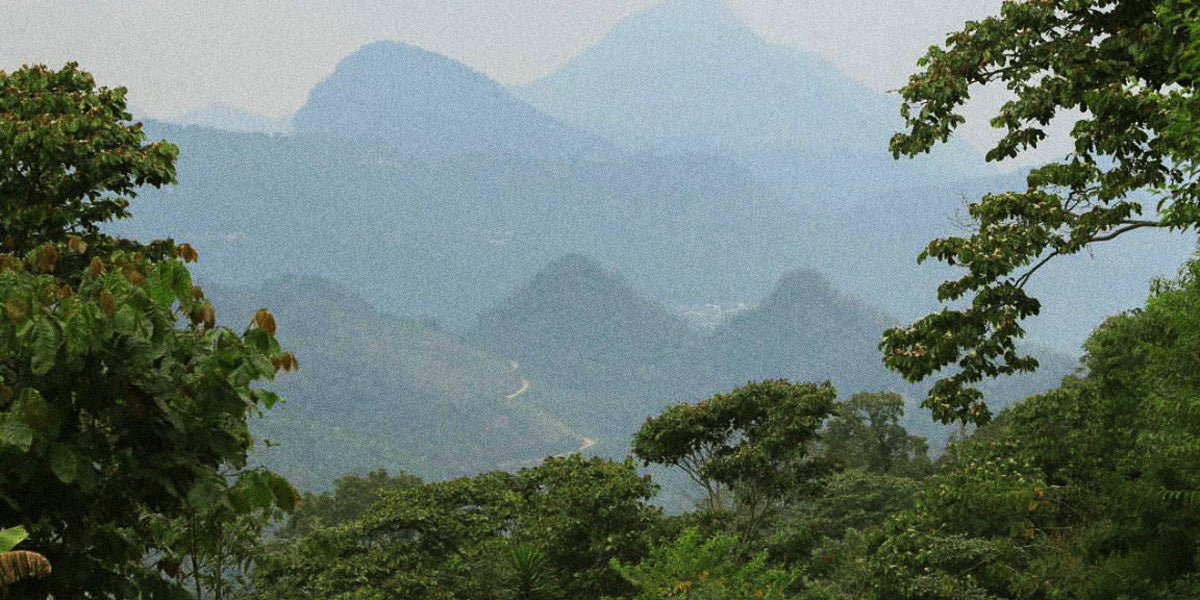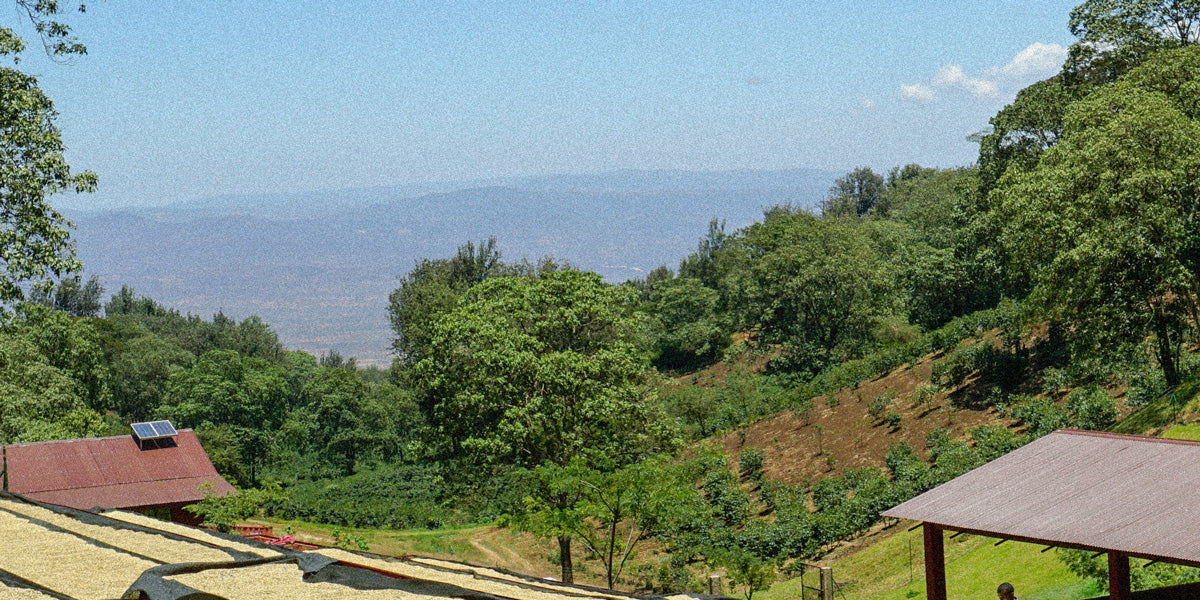Coffee Terroir Overview •
Read our Terroir articleCoffee Terroir Guide: The Birthplace of Coffee - Ethiopia
In fact, to this day, there are still thousands of unclassified varieties of Coffea Arabica (the coffee plant) growing wild–what we call heirloom, or landrace, varieties.
As the fifth largest coffee producer in the world, Ethiopia has mastered the art of harvesting and processing coffee beans. But how did coffee come about in the first place? Let’s dive into the history of coffee in Ethiopia.
Coffee Origins
The legend of how coffee was first discovered goes like this:
Once upon a time, in the 9th century, a goat herder named Kaldi noticed his goats becoming unusually energetic after eating the bright, red fruit off of a certain plant. He decided to try them for himself. Feeling the stimulating effects, he shared them with the monks in the local monastery, who then began using coffee to stay awake during prayers.
That’s the legend. Who knows who really discovered coffee in Ethiopia, but what we do know is that by the 15th century, coffee plants had been taken to Yemen and were recorded for cultivation. From Yemen, coffee began moving all over the Arabian Peninsula and, eventually, the world!
That is Ethiopia’s past when it comes to coffee. But what’s going on with coffee in the present?
Growing Coffee in Ethiopia
Geographically speaking, the high elevations and mountainous regions of Ethiopia make for excellent growing conditions. In fact, unlike most other coffee-producing countries, virtually all of Ethiopia’s coffee is certified as Strictly High Grown (SHG) / Strictly Hard Bean (SHB).
This allows all of their coffee to develop at a slower rate, becoming nutrient-dense and flavor-rich.
Coffee is produced through one of three systems: forest, garden, or plantation.
Forest coffee is grown wild and harvested by locals from the forest, often with low yields. Garden coffee (the most popular method) is grown in small plots alongside a variety of other crops and are measured by individual plants rather than hectares. Plantation coffee is grown on large, single-crop estates. Only a small percentage of Ethiopian coffee is harvested this way.
Regardless of region, the most common coffee processing method is natural, which constitutes over 70% of all its coffee! Though a smaller percentage is washed, this method amplifies the bright and fruity notes inherent to the coffee and its cherry.
But coffee is not only a popular crop in Ethiopia–it’s also an essential part of its culture.
Coffee Culture in Ethiopia
Coffee is such a big part of Ethiopian culture that there is a daily event known as the Ethiopian coffee ceremony (or, “buna”). In this ceremony, a hostess roasts locally grown coffee beans in a pan over an open fire. She then grinds them with a mortar and pestle, brews the grounds in a clay pot called a jebena, and serves the beverage accompanied with snacks like popcorn.
This ceremony doesn’t just happen once a day in Ethiopia–it happens up to three times a day–morning, noon, and evening! That’s a lot of roasting and drinking and popping!
But Ethiopia’s coffee culture doesn’t just include people’s personal lives; it also encompasses the infrastructure in place to support coffee farmers and monitor quality control.
For example, the Jimma Agricultural Research Center (JARC), founded in 1967, is an agricultural research institution that is actively developing new coffee varieties to help improve quality, yield, resistance to diseases and pests, and sustainability for Ethiopian coffee farmers.
The Ethiopian Coffee Exchange (ECX), started in 2008, aims to provide quality control and a trading platform for coffee. This involves sampling, grading, and certifying quality to create a standardized system.
And in 2021, the Ethiopia Coffee and Tea Authority (ECTA) was established, which in turn operates a Coffee Training Center (CTC). The CTC supports farmers by providing specialized education and skill development within the nation’s coffee industry.
But let’s get to the good stuff. How does Ethiopian coffee taste?
Ethiopian Coffee Flavor Profile
There are several coffee-producing regions in Ethiopia, and each one produces coffee with its own distinct flavor profile:
Yirgacheffe: These coffees have a bright and clean flavor and aroma, with vibrant floral or citrus notes and a light to medium body. They are incredibly fragrant and are regularly rated and reviewed as some of the highest-quality Arabica beans in the world. Since they are premium-grade coffees, they are often more expensive.
Sidama: Best known for its rich mouthfeels, full bodies, and sweet and complex flavor profiles. Sidamo beans often have low acidity, with a vibrant aftertaste. Because of their flavor consistency, they are a staple Ethiopian bean for many coffee roasters.
Harrar: These beans are heavy-bodied with a very spicy and fragrant aroma. They have a floral acidity and produce a bright, almost intensely flavored cup. The taste is often described as "wild" or "jammy" and is reminiscent of a blackberry.
Guji: These are known for their complex flavor profiles and their bright, fruity notes.
Ethiopian coffees are as wild as the forests from which they come–each offering their own fragrant and delicious interpretation of 1500 years of Arabica coffee history. Some might be bright and fruity, others bright and floral, but all tell the same story of the one and only birthplace of coffee: Ethiopia.
Explore Coffees
Morkata Gata • Natural-Processed Guji Heirloom
Taste of Ethiopia • Combo 2 Pack
Morkata Gata • Washed-Processed Guji Heirloom


